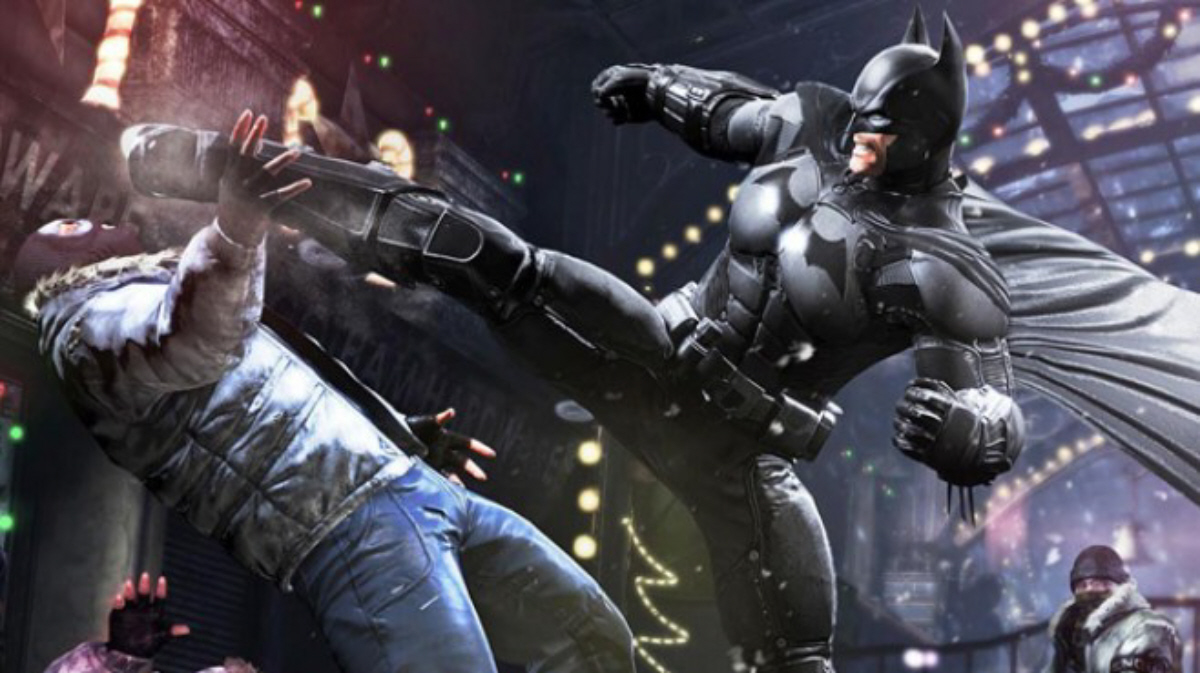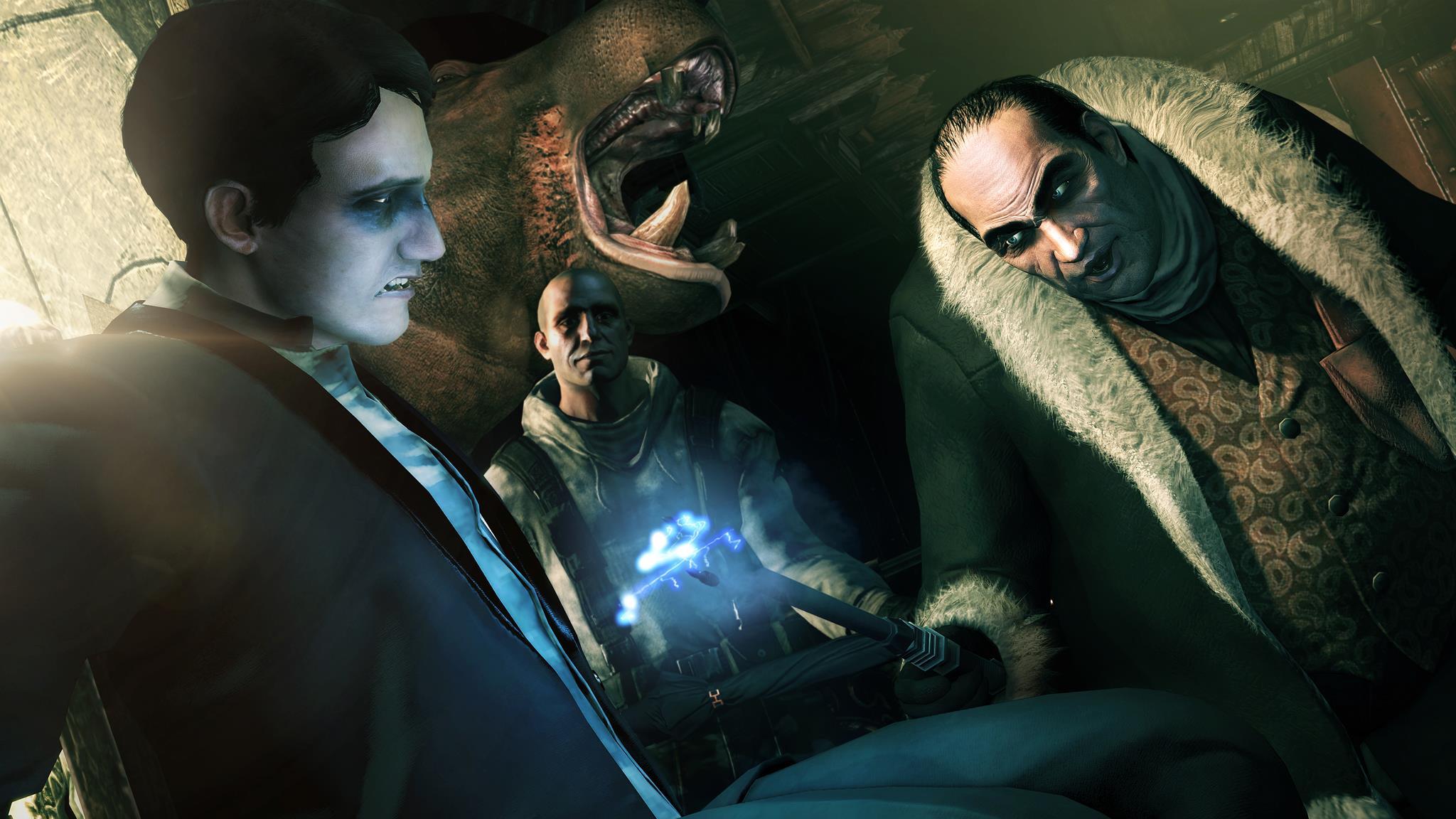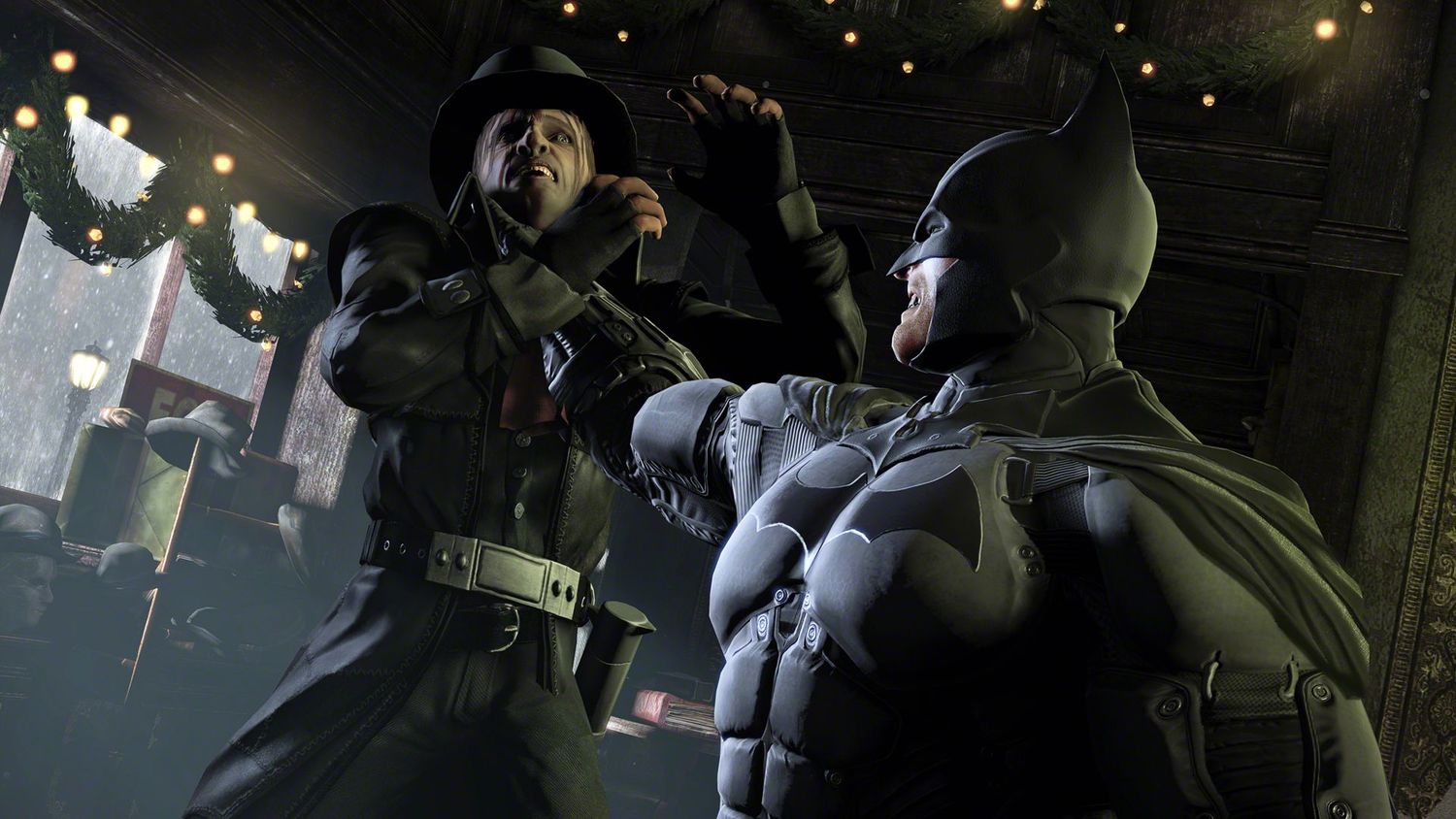Batman: Arkham Origins is the third installment in the Arkham series. Stepping away from Rocksteady Studios, Origins is the first in the series developed by Warner Brothers Studios Montreal, with some help from Human Head Studios for the Wii U version.
Arkham Origins is a prequel to Arkham Asylum and City. Here, we are introduced to a younger, less jaded, some may even say still a little wet behind the ears, Batman as he finds himself facing a very long Christmas Eve. While doing the things Batman does, fighting crime, sneaking around, being all dark, Batman finds himself crossing the Black Mask who gives Batman a little present by placing a bounty on his head that brings the top eight assassins after him. The rest of Batman’s Christmas Eve is filled with surviving the attacks from the assassins, beating up thugs, solving Enigma puzzles and tracking down what or who is behind Black Mask and this bounty. You know, the normal Batman stuff.
Warner Brothers Montreal attempts to make Origins their own, while trying not to tread on what made Arkham so enjoyable in the first place. Coming off the Batman Universe that Christopher Nolan created, Arkham Asylum and City played to the darker and grittier Batman. Origins still feels very much like your normal Arkham game, which could be a bad thing if you were expecting something majorly different.
Even though the concept of Arkham Origins is the same, it comes across with a different feel while being a prequal. When we first saw Batman during Arkham Asylum, we were introduced to a seasoned Batman that has been through a lot of rough years. In Origins, Batman hasn’t really hit his stride. On description has the Batman of Asylum as version 5.0 and the Batman of Origins as version 1.0. As the player Bats around, conversations are heard about whom or what is this “Batman.” Even the Gotham police department are crazy enough to try and take on Batman. It is interesting to follow the maturing of Batman as he is introduced to some of his top counterparts for the first time.
The young Batman interactions could go further into the way he is even controlled. I played finger cramping amount of Asylum and City. I enjoyed how I could seamlessly move Batman from one villain to another. It gave that feeling that I was Batman. Something in the Origins controls seems a little off. It’s hard to really put a punching finger on the issue, seeing that the controls are pretty much the same. Maybe Batman is a little slower or softer? Maybe that’s part of the idea of him being a younger version? Or maybe Warner Brothers Montreal missed the mark on the controls by a fraction. Who knows, it really wasn’t that big of a deal to me.
The naive and younger Batman all culminates in the first major boss battle against Deathstroke. It would be naive of the player to think the first boss battle would be the easiest. It wasn’t. In fact, the Deathstroke battle was one of the most frustrating but rewarding first boss battles I have played in a while. To put it simply, Deathstroke is the ultimate fighter. He has it all, skills, tactical training and the intellect to make him the best. Even at his peak, Batman would have a hard time defeating Deathstroke. In Origins, Batman stands no chance against the older and skilled Deathstroke. The gap in skill results in Deathstroke’s extreme cockiness towards the young Batman.
The whole Deathstroke battle can be summed up in one word, patience. Batman cannot take Deathstroke head-on, which is the first instinct of Batman and the players. Instead, Batman and the player need to wait patiently for their opening. While taking and ignoring all of Deakthsrokes taunts. Like all the brawls, the player is made aware by a little icon, when an enemy is about to attack. The player then quickly hits the counter button to send Batman into one of his epic moves. The counter process is exuberated in the fight against Deathstroke, and timing and patience is the key. It will be up to the player to find out when is the right time to counter and attack this formidable foe.
GamePad
If players are expecting a progression in GamePad controls after the Wii U version of Arkham City, they will be disappointed. Arkham Origins does use the GamePad, but not at the depth many gamers expected or wanted. The obvious interactive map is constantly found on the GamePad. It is nice to be able to use a finger to quickly look around the map without having to stop the game. The GamePad is also used as the communication tool between Batman and Alfred. The knowledge of Alfred will be spewed out of the GamePad’s speakers while Batman responds on the TV.
The GamePad is also used in the new advanced detective ability. The normal Batman detective mode is still available and as handy as ever, but Origins introduces another advanced mode that is available periodically throughout the game. In this mode the player uses the GamePad like the eyes of Batman. While facing the GamePad at the TV, the player toggles the mode, which changes the GamePad’s screen into a new first person perspective. While using the gyroscope, the player use the GamePad to look around to scan for clues. Once pieces come together, Batman is able to visualize and interact with a holographic crime scene. This may seem weird, but it’s a way to help the player visually see through Batman’s process.
Conclusion
It really took me some time to warm up to Batman Arkham Origins. Maybe I came into the game thinking that Rocksteady nailed the Batman genre and no one could touch it. No matter my issue, after two or three hours, I was really hooked on the game. WB Montreal did a good job continuing the foundation that Rocksteady set forth, while still making the game their own. Origins may not be the best in the series, but Arkham and Batman fans will enjoy what this game has to offer.
PN Review: Batman Arkham Origins







October 31, 2013
Even though I’m a die-hard Mario fan, I have to say that this game would be the driving force for me to purchase a Wii U.
October 31, 2013
Can’t wait to play this. Treated myself to the collectors edition!
November 7, 2013
I got the collector’s edition too. However, I’m so upset about the Joker statue. It is so fragile, and not put together well.
November 7, 2013
This game was such a disappointment. The gameplay is an exact replica of that from Arkham City. The “new” gadgets were reskinned, renamed gadgets from Arkham City. The city was more expansive, but no reason to explore. The Batcave was empty, and the story was just another Batman story until the very end.
November 7, 2013
I have to tell you, I agree with you all the way. It wasn’t a terrible game by any means, but it definitely felt too rehashed. I remember the developers saying how Gotham City was 4 times bigger then Arkham City and I was so excited about that, but like you said, no real reason to explore outside trophies and Enigma relays/extortion data.
I also agree with what James said about the control scheme, I had the exact same thought in that the controls felt off by a faction of a second. The explanation that it might be because Batman is supposed to feel a bit amateur here is a good explanation but even then, if the controls were clunky on purpose it doesn’t really feel justified.
On a personal note: If there’s one thing that annoyed me about all others about this game is that plot twist, which if you’ve played the game, you knoe exactly what I’m talking about.
November 7, 2013
I remember exactly when it hit me how much of a rehashed game this was. I got the special “glue grenade.” Which first of all just sounds weird. But when they told me to double tap R2 to use it, all I could think was “Wasn’t that the quick-use button for the freeze grenade?” At least the freeze grenade made sense. But glue?
Then of course, you have Deathstroke’s gadget which is essentially the line launcher from previous titles. Also, something a lot of people, including me, questioned, was why do we get the grapnel boost from the beginning, when it was still in the prototype stage in AC? I understand that it would make fans feel less powerful (which is the point of this prequel) but this was the chance to get a new form of transportation. And I don’t mean fast-travel with the Batwing. Why couldn’t we have the Batmobile? That just would have been great! Honestly, using the Batwing to travel across a city seems ridiculous to me. If we’re traveling to Metropolis or Europe, the Batwing makes sense. But not to travel across the city!